[SUPER RICH] Huge salary gap between Korean and U.S. superrich
By Korea HeraldPublished : April 14, 2015 - 19:41
How much do the superrich earn each year from their business achievements?
Whenever salary statements of business heads are revealed, the company’s annual performance and achievements are evaluated as well. This is to determine whether the business head deserves the salary that he or she received. For this reason, the annual salary of a business head is often referred to as “compensation.”
The Superrich Team looked into the annual salaries of both Korean and U.S. superrich by collecting data from S&P500 companies that revealed their board members’ salaries in 2014, as well as data that companies have disclosed to the U.S. Securities and Exchange Commission from January to March 2015.
The average annual salary of the U.S.’s top 10 superrich was $48.8 million, while the average annual salary of top 10 Korean superrich was $7.2 million. On average, U.S. superrich earned roughly seven times more than their Korean counterparts.
The U.S. superrich with the highest annual salary is David Zaslav, CEO of Discovery Communications, who earns about $156 million per year.

His annual salary is over twice that of Larry Ellison, CEO of Oracle Corporation, who earns $67 million.
Viacom CEO Philippe Dauman was recorded as earning an annual salary of $44 million, and Marillyn Hewson, CEO of defense firm Lockheed Martin, is the only female superrich on the list with an annual salary of $34 million.
In the case of South Korea, the superrich with the highest annual salary is Hyundai Motor Group chairman Chung Mong-koo, who receives an annual salary of $19 million (21.5 billion won) from Hyundai Motor, Hyundai Steel and Hyundai Mobis.
Samsung Electronics CEO Shin Jong-kyun earns $13 million, the highest among all professional managers in South Korea after Chung. Following Shin was Samsung Electronics vice chairman Kwon Oh-hyun with $8.6 million, Samsung Electronics president and CEO Yoon Boo-keun with $5 million and Samsung Electronics president and CFO Lee Sang-hoon with $3.5 million.
AmorePacific chairman Suh Kyung-bae was reported to receive an annual salary of $4.09 million, and LG Group chairman Koo Bon-moo receives $4.07 million annually.
Although the Korean and U.S. superrich show a huge difference in terms of their salary, a closer look showed that their basic salaries were similar.
The average base pay of Korean superrich was $2.38 million, which is only slightly more than the base pay of U.S. board members, which is $2.31 million. So what determines the difference in total compensation?
High ratio of incentives in U.S.
The proportion of the base pay to total compensation was the key difference between the superrich in Korea and the United States.
For Korean superrich the average ratio was 33 percent, but it was only 4.7 percent on average for the U.S. superrich.
Instead, U.S. superrich were usually found to receive bonuses (over 10 times that of the base pay) or stock options as incentives.
In the case of Walt Disney CEO Robert Iger, his base pay was $2.5 million, but he received $46 million in total in 2014 after incentives, thanks to the massive success of Disney’s feature film “Frozen.”
CVS CEO Larry Merlo’s total salary in 2014 was $32 million, but his base pay is only $350,000. Instead, Merlo received the rest of the pay as incentives as CVS reaped a profit of nearly $9.2 billion last year.
Oracle CEO Larry Ellison, who famously earns a base pay of $1, received $67 million last year from stock options and bonuses since the company took in a $14.7 billion in profit.
Meanwhile, there are also businessmen who failed to receive their expected salary for not reaching their profit goals.
Discovery CEO David Zaslav was to receive $156 million under the condition of receiving $147 million as stocks across six years. However, in 2014, he took home a base pay of $3 million and a bonus of $6.08 million for failing to achieve his profit goals, showing the U.S.’s performance-based corporate culture where the CEO can be denied a part of his pay for lackluster performance.
High ratio of base pay and severance in South Korea
Base pay makes up a large proportion of one’s total salary for South Korean superrich. In addition, severance also makes up a considerable amount.
LG Group chairman Koo Bon-moo has a base pay of $3.2 million and an incentive of $867,000, and former Hyundai Steel vice chairman Park Seung-ha’s base pay was $2.6 million out of $5.1 million his total earnings.
Hyundai Motor chairman Chung Mong-koo retired from directorship of Hyundai Steel in March last year, and received $9.9 million in severance ― around half of his total salary last year.
Former Hyundai Steel vice chairman Park Seung-ha stepped down from his position last October, and received $2.5 million in severance.
Former POSCO chairman Chung Joon-yang received $2.9 million after retiring in March last year, which takes up 80 percent of his total pay of $3.6 million.
The severance that business heads receive also has the effect of boosting their salary. Chung Mong-koo’s salary rose from $12.9 million in 2013 to $19 million in 2014, while Park Seung-ha’s salary rose from $1.2 million to $5.1 million when the severance is included.
By The Korea Herald Superrich Team (sangyj@heraldcorp.com)
Kwon Nam-keun, Hong Seung-wan, Sung Yeon-jin, Bae Ji-sook, Yoon Hyun-jong, Min Sang-seek, Kim Hyun-il, Sang Youn-joo
Whenever salary statements of business heads are revealed, the company’s annual performance and achievements are evaluated as well. This is to determine whether the business head deserves the salary that he or she received. For this reason, the annual salary of a business head is often referred to as “compensation.”
The Superrich Team looked into the annual salaries of both Korean and U.S. superrich by collecting data from S&P500 companies that revealed their board members’ salaries in 2014, as well as data that companies have disclosed to the U.S. Securities and Exchange Commission from January to March 2015.
The average annual salary of the U.S.’s top 10 superrich was $48.8 million, while the average annual salary of top 10 Korean superrich was $7.2 million. On average, U.S. superrich earned roughly seven times more than their Korean counterparts.
The U.S. superrich with the highest annual salary is David Zaslav, CEO of Discovery Communications, who earns about $156 million per year.

His annual salary is over twice that of Larry Ellison, CEO of Oracle Corporation, who earns $67 million.
Viacom CEO Philippe Dauman was recorded as earning an annual salary of $44 million, and Marillyn Hewson, CEO of defense firm Lockheed Martin, is the only female superrich on the list with an annual salary of $34 million.
In the case of South Korea, the superrich with the highest annual salary is Hyundai Motor Group chairman Chung Mong-koo, who receives an annual salary of $19 million (21.5 billion won) from Hyundai Motor, Hyundai Steel and Hyundai Mobis.
Samsung Electronics CEO Shin Jong-kyun earns $13 million, the highest among all professional managers in South Korea after Chung. Following Shin was Samsung Electronics vice chairman Kwon Oh-hyun with $8.6 million, Samsung Electronics president and CEO Yoon Boo-keun with $5 million and Samsung Electronics president and CFO Lee Sang-hoon with $3.5 million.
AmorePacific chairman Suh Kyung-bae was reported to receive an annual salary of $4.09 million, and LG Group chairman Koo Bon-moo receives $4.07 million annually.
Although the Korean and U.S. superrich show a huge difference in terms of their salary, a closer look showed that their basic salaries were similar.
The average base pay of Korean superrich was $2.38 million, which is only slightly more than the base pay of U.S. board members, which is $2.31 million. So what determines the difference in total compensation?
High ratio of incentives in U.S.
The proportion of the base pay to total compensation was the key difference between the superrich in Korea and the United States.
For Korean superrich the average ratio was 33 percent, but it was only 4.7 percent on average for the U.S. superrich.
Instead, U.S. superrich were usually found to receive bonuses (over 10 times that of the base pay) or stock options as incentives.
In the case of Walt Disney CEO Robert Iger, his base pay was $2.5 million, but he received $46 million in total in 2014 after incentives, thanks to the massive success of Disney’s feature film “Frozen.”
CVS CEO Larry Merlo’s total salary in 2014 was $32 million, but his base pay is only $350,000. Instead, Merlo received the rest of the pay as incentives as CVS reaped a profit of nearly $9.2 billion last year.
Oracle CEO Larry Ellison, who famously earns a base pay of $1, received $67 million last year from stock options and bonuses since the company took in a $14.7 billion in profit.
Meanwhile, there are also businessmen who failed to receive their expected salary for not reaching their profit goals.
Discovery CEO David Zaslav was to receive $156 million under the condition of receiving $147 million as stocks across six years. However, in 2014, he took home a base pay of $3 million and a bonus of $6.08 million for failing to achieve his profit goals, showing the U.S.’s performance-based corporate culture where the CEO can be denied a part of his pay for lackluster performance.
High ratio of base pay and severance in South Korea
Base pay makes up a large proportion of one’s total salary for South Korean superrich. In addition, severance also makes up a considerable amount.
LG Group chairman Koo Bon-moo has a base pay of $3.2 million and an incentive of $867,000, and former Hyundai Steel vice chairman Park Seung-ha’s base pay was $2.6 million out of $5.1 million his total earnings.
Hyundai Motor chairman Chung Mong-koo retired from directorship of Hyundai Steel in March last year, and received $9.9 million in severance ― around half of his total salary last year.
Former Hyundai Steel vice chairman Park Seung-ha stepped down from his position last October, and received $2.5 million in severance.
Former POSCO chairman Chung Joon-yang received $2.9 million after retiring in March last year, which takes up 80 percent of his total pay of $3.6 million.
The severance that business heads receive also has the effect of boosting their salary. Chung Mong-koo’s salary rose from $12.9 million in 2013 to $19 million in 2014, while Park Seung-ha’s salary rose from $1.2 million to $5.1 million when the severance is included.
By The Korea Herald Superrich Team (sangyj@heraldcorp.com)
Kwon Nam-keun, Hong Seung-wan, Sung Yeon-jin, Bae Ji-sook, Yoon Hyun-jong, Min Sang-seek, Kim Hyun-il, Sang Youn-joo
-
Articles by Korea Herald



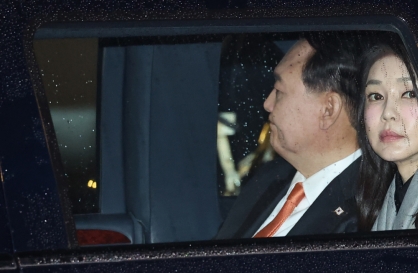

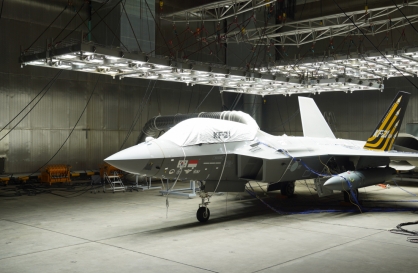
![[KH Explains] Can tech firms' AI alliances take on Nvidia?](http://res.heraldm.com/phpwas/restmb_idxmake.php?idx=644&simg=/content/image/2024/05/07/20240507050619_0.jpg&u=)
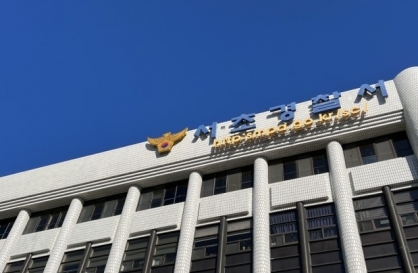

![[Grace Kao, Meera Choi] Has money displaced romance on dates?](http://res.heraldm.com/phpwas/restmb_idxmake.php?idx=644&simg=/content/image/2024/05/06/20240506050233_0.jpg&u=)
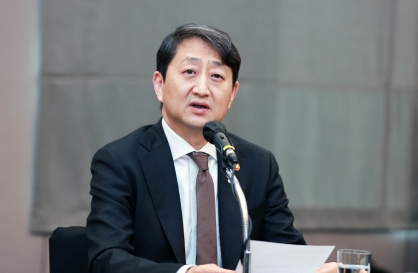




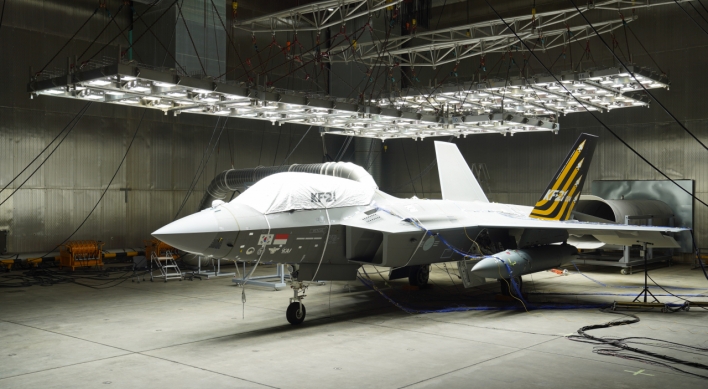
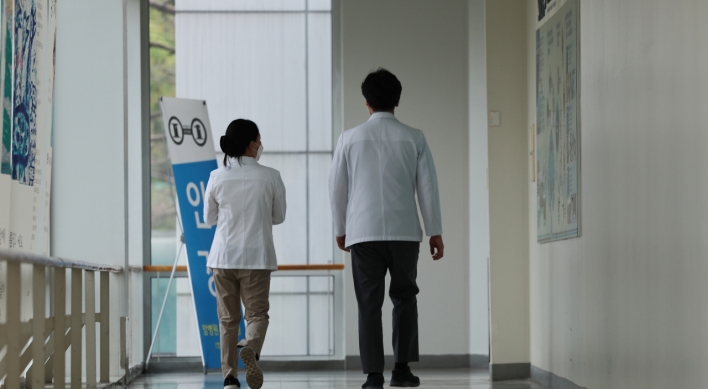

![[K-pop’s dilemma] Time, profit pressures work against originality](http://res.heraldm.com/phpwas/restmb_idxmake.php?idx=652&simg=/content/image/2024/05/08/20240508050705_0.jpg&u=20240508171126)
![[Today’s K-pop] NCT Dream to drop pre-release from 2nd Japan single](http://res.heraldm.com/phpwas/restmb_idxmake.php?idx=642&simg=/content/image/2024/05/08/20240508050725_0.jpg&u=)